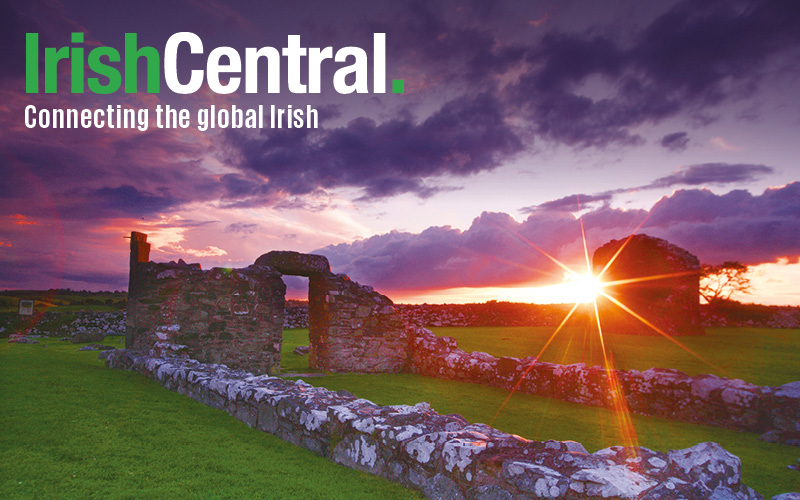A recent episode of PBS’s “Finding Your Roots” explored the colorful Irish roots of three of the US’s most well-known social commentators—Bill O’Reilly, Soledad O’Brien and Bill Maher—and among their interesting array of ancestors we find convicts shipped off to Australia, successful early 20th century female business owners, bartenders, union presidents, victims of the Irish famine, and soldiers in the First World War.
All three are among the one out of ten Americans who claim Irish heritage, and attributing much of their own success and determination to their Irish roots.
“It’s the blarney, it’s the dash of courage, handed down from the past,” said O’Reilly, while both Maher and O’Brien admitted to feeling more cut off from their Irish heritage.
As an award-winning journalist, documentarian, news anchor and producer, Soledad O’Brien has been applauded for her coverage of diversity and races issues. Although she has explored the heritage of her Afro-Cuban mother, the story of her Australian father of Irish descent was largely left behind.
READ MORE: How to trace your roots in Ireland - tips on finding your Irish ancestors.
With thanks to the Finding the Roots team, however, she discovered a history of strong business women within her Irish family located in Australia, as well as few Scottish convicts transported to the land down under to pay for their crimes.
O’Brien’s father escaped to the US in the 1950s, eager not to work as a chemical engineer in the family mill established several generations before. The journalist had never before known the full story behind the growth of this mill, however, and the efforts of a widow with ten children to keep the business alive.
Patrick O’Brien, from Milltown, Co. Clare, and Ellen Fitzgerald, from Bantry, Co. Cork, arrived in Toowoomba in Queensland, Australia, in the 1870s and quickly departed from their positions as a laborer and a servant to establish the Defiance Mill, still run by O’Brien family at the time of her father’s departure.
Although unable to establish any more about Ellen’s past, Patrick’s father, Anthony O’Brien—Soledad’s great great grandfather—appears under County Clare in the Griffith Valuation Book of 1809. The family are shown as tenant farmers leasing a house and land from a planted landlord, keeping them in poverty throughout the years of the Great Hunger. Still feeling the after effects of famine-time Ireland, Anthony’s son Patrick decided to take his chance at passage to Australia.
By the time of her great grandfather’s death in 1906, Patrick O’Brien was one of the town’s most prominent businessmen but his death left his wife and 10 children in dire straits. Although Ellen was left with the mill, she did not have any cash to keep it going and so called on the local wheat farmers to keep the business afloat.
By the time Ellen died 40 years later, she was the owner of three leading businesses and had increased the mill’s profit from £10,000 to £150,000.
Bill Maher also had massive tales of success in his own family history, including an Irish American grandfather who negotiated with none other that the President of the United States of America.
Maher’s grandfather, also named William, died before he was born and so Maher never came to hear how he organized one of the biggest strikes ever seen in the New York harbor in January 1919 while he was serving as president of the Masters, Mates and Pilots Union.
With 16,000 workers on strike, the President was forced to intervene through weeks of negotiations and William Maher secured concessions including an eight hour day for the workers. A huge feat when unions were only fledgling in the city.
As with Soledad O’Brien, Maher is also the descendant of those Irish fleeing post-famine Ireland. Coming into New York in the 1850s, Denis and Mary Greaney left Killury in Co. Kerry for a new life in the US.
READ MORE: The top five questions about Irish genealogy.
Bill O’Reilly too is a descendent of the Irish of this era with his great-grandfather John O’Reilly fleeing from Clonoose, Co. Cavan with only his twin brother alongside him at just 16 years old. Living in one of the worst struck parts of the country during the Great Hunger, the O'Reilly family were potato farmers, vastly affected by the blight that destroyed their crop for five straight years. The town’s population dropped by 30 per cent during this time and eager to escape the same fate, John made his way to Brooklyn, New York.
Taking up residence in Sunset Park, an old Irish enclave in Brooklyn, he saved enough money to buy his own salon, taking on one of the Irish jobs that remains a stereotype to this day—selling liquor.
There were also some surprising overlaps between the trio’s family histories.
As was revealed on IrishCentral at the end of 2015, the episode had already announced the shocking connection between political polar-opposites Maher and O’Reilly, discovered through a DNA test of the Y chromosome.
The Y-DNA test analyses the y-chromosome passed from father to son to reveal the Haplogroup your DNA is designated to. Both men shared a Haplogroup R1MB222 with host Henry Louis Gates Jnr, traced back to the legendary 5th century Irish figure “Niall of the Nine Hostages,” believed to have 3 million male descendants worldwide.
“I’ve always considered myself a warrior,” Bill O’Reilly said of the discovery.
Not only this but Maher and O’Reilly are even more closely related than the 5th century, with DNA results showing that they shared a connection within the past 500 years.
READ MORE: Bill Maher and Bill O’Reilly are related through ancient Celtic King.
Soledad O’Brien also shares a funny connection with a late night talk show host known for his sometimes critical comments of her. Stephen Colbert, who they describe as “super Irish,” shares DNA with the journalist showing their families’ paths crossed at some point in the past few hundred years.




Comments